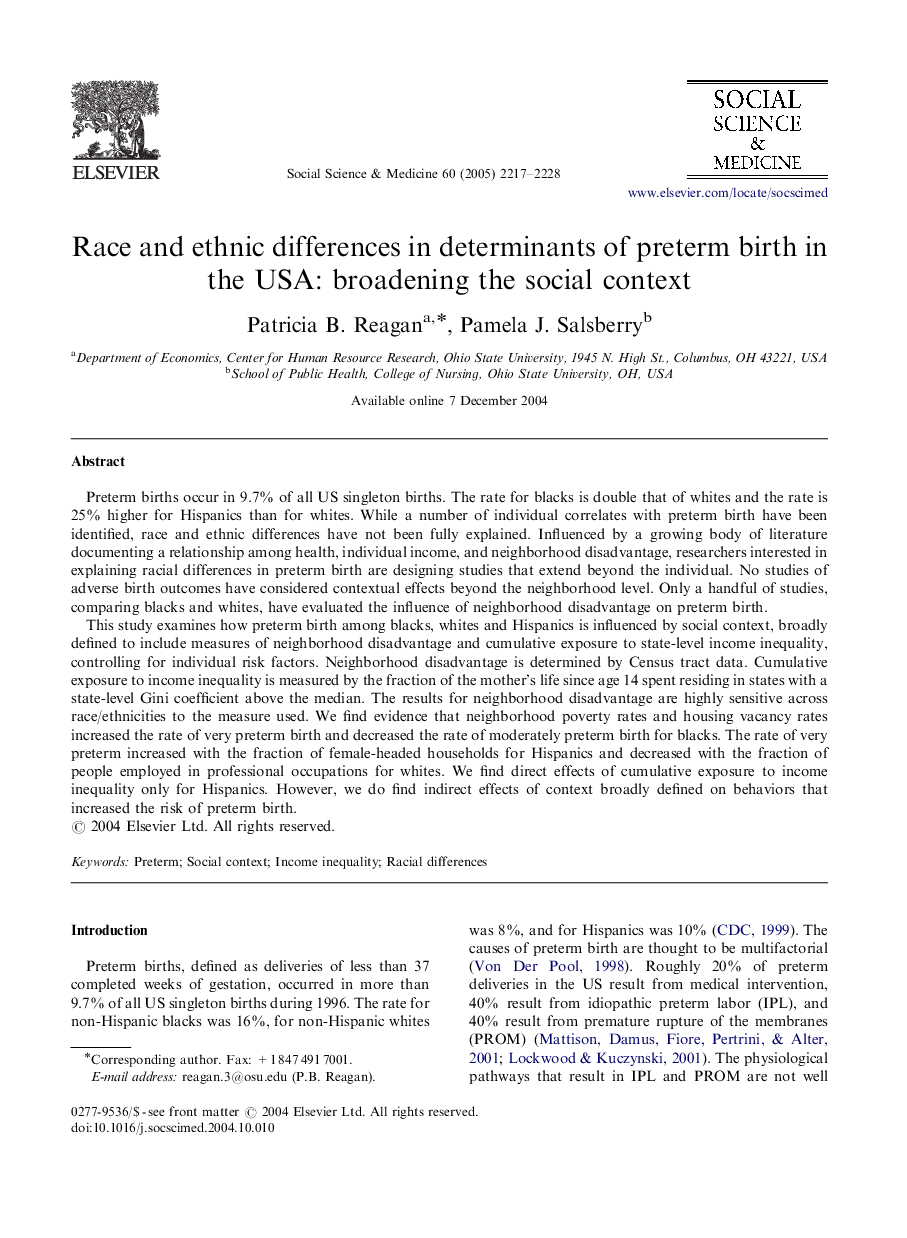| Article ID | Journal | Published Year | Pages | File Type |
|---|---|---|---|---|
| 955272 | Social Science & Medicine | 2005 | 12 Pages |
Preterm births occur in 9.7% of all US singleton births. The rate for blacks is double that of whites and the rate is 25% higher for Hispanics than for whites. While a number of individual correlates with preterm birth have been identified, race and ethnic differences have not been fully explained. Influenced by a growing body of literature documenting a relationship among health, individual income, and neighborhood disadvantage, researchers interested in explaining racial differences in preterm birth are designing studies that extend beyond the individual. No studies of adverse birth outcomes have considered contextual effects beyond the neighborhood level. Only a handful of studies, comparing blacks and whites, have evaluated the influence of neighborhood disadvantage on preterm birth.This study examines how preterm birth among blacks, whites and Hispanics is influenced by social context, broadly defined to include measures of neighborhood disadvantage and cumulative exposure to state-level income inequality, controlling for individual risk factors. Neighborhood disadvantage is determined by Census tract data. Cumulative exposure to income inequality is measured by the fraction of the mother's life since age 14 spent residing in states with a state-level Gini coefficient above the median. The results for neighborhood disadvantage are highly sensitive across race/ethnicities to the measure used. We find evidence that neighborhood poverty rates and housing vacancy rates increased the rate of very preterm birth and decreased the rate of moderately preterm birth for blacks. The rate of very preterm increased with the fraction of female-headed households for Hispanics and decreased with the fraction of people employed in professional occupations for whites. We find direct effects of cumulative exposure to income inequality only for Hispanics. However, we do find indirect effects of context broadly defined on behaviors that increased the risk of preterm birth.
